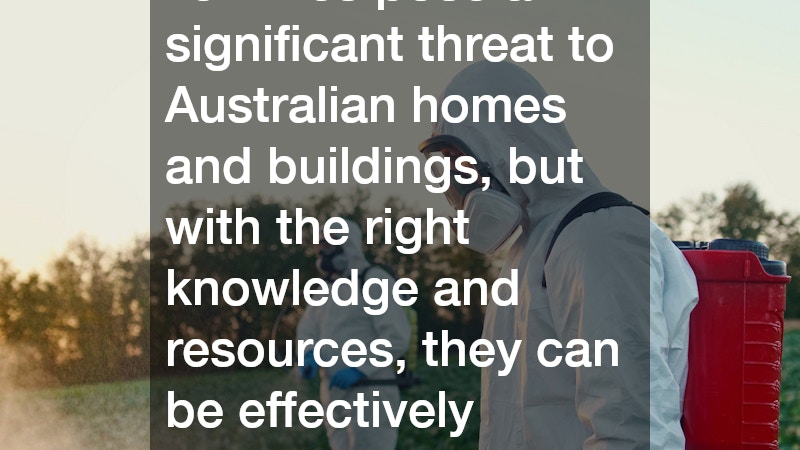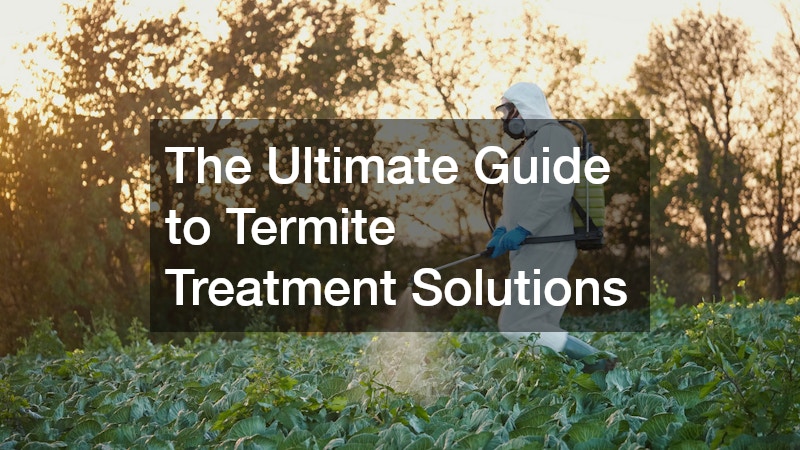When it comes to protecting your property, few threats are as quietly destructive as termites. These pests can cause significant structural damage before you even notice their presence, resulting in expensive repairs and lost property value. Understanding termite treatment solutions is essential for homeowners, property managers, and builders alike. This guide outlines the most effective strategies to combat termite infestations and why partnering with a professional termite treatment company can make all the difference.
Understanding the Threat of Termites
Australia is home to some of the most aggressive termite species in the world, particularly subterranean termites. These insects live in large colonies underground and can tunnel their way into timber structures undetected.
They feed on cellulose, which is found in wood, paper, and plant materials. Once termites infiltrate a building, they often go unnoticed for months, or even years as they eat away at the internal structure. By the time visible signs of damage appear, the infestation may already be severe.
Environmental conditions in many parts of Australia, including high humidity and warm temperatures, create an ideal habitat for termites. This makes termite prevention and treatment not just a recommendation, but a necessity. If left unaddressed, termites can compromise the safety and value of your home, leading to costly restoration work.
Types of Termite Treatment Solutions
There are several approaches to termite control, each suited to different infestation levels and property types. One of the most common is chemical soil treatment, which involves applying a termiticide barrier around the perimeter of a structure. This method acts as a deterrent and eliminates termites as they try to enter the property. It’s especially effective during new construction but can also be applied to existing buildings.
Another widely used method is the installation of baiting systems. These systems use strategically placed bait stations containing a slow-acting toxic substance that termites carry back to their colony. Over time, the entire colony is eradicated. Baiting is a popular choice for ongoing termite management and is often less disruptive than soil treatments.
Physical barriers are another solution, particularly in new builds. These include stainless steel mesh and graded stone systems installed during construction to block termite entry. While not a treatment per se, physical barriers are highly effective in preventing infestations and are often used in combination with chemical methods for maximum protection.
Wood treatments also offer an internal line of defence by applying termiticide directly to timber used in construction. This method is useful for treating vulnerable areas, especially in renovations or extensions where new wood meets older structures.
Choosing the Right Termite Treatment Company
With so many treatment options available, selecting a trusted and experienced termite treatment company is crucial. A reputable company will begin with a comprehensive inspection to assess the severity of the infestation and identify termite species, entry points, and affected areas. This information allows them to tailor a solution that addresses the specific needs of your property.
Not all termite treatment companies offer the same level of service. It is important to select one that uses licensed and insured technicians, up-to-date equipment, and environmentally responsible products. Ongoing monitoring and maintenance are also vital components of an effective termite control plan. A quality company will provide scheduled inspections and adjust treatments as needed to ensure continued protection.
Another advantage of working with a professional termite treatment company is their knowledge of local termite behaviour and regional risk factors. What works in one climate or soil type may not be effective in another. Local expertise ensures the right method is used for long-term success.
Long-Term Prevention & Property Maintenance
Treating an active termite infestation is only part of the equation. Long-term prevention is critical to ensure termites do not return. One of the simplest preventative steps is to reduce sources of moisture around your home. Termites are attracted to damp environments, so keeping gutters clear, fixing leaks, and maintaining proper drainage can deter them from settling nearby.
Maintaining adequate clearance between timber and the soil around your home also helps reduce access points. Regular inspections—especially in areas with a history of termite activity—should be a standard part of property upkeep. It’s advisable to have a professional termite treatment company conduct annual checks to catch any early signs of infestation before they become serious.
Landscaping should also be done with termites in mind. Avoid planting trees and shrubs too close to your home’s foundation, and never store timber or firewood against the side of the house. These habits not only limit food sources for termites but also reduce shelter options.
Termites pose a significant threat to Australian homes and buildings, but with the right knowledge and resources, they can be effectively managed. A combination of proactive prevention, ongoing maintenance, and expert intervention is essential for long-term protection. Whether you are building a new home, renovating, or simply maintaining your existing property, engaging a qualified termite treatment company ensures your investment is safeguarded against hidden structural damage. Their experience, advanced methods, and tailored solutions provide the most reliable defence against one of Australia’s most destructive pests.

